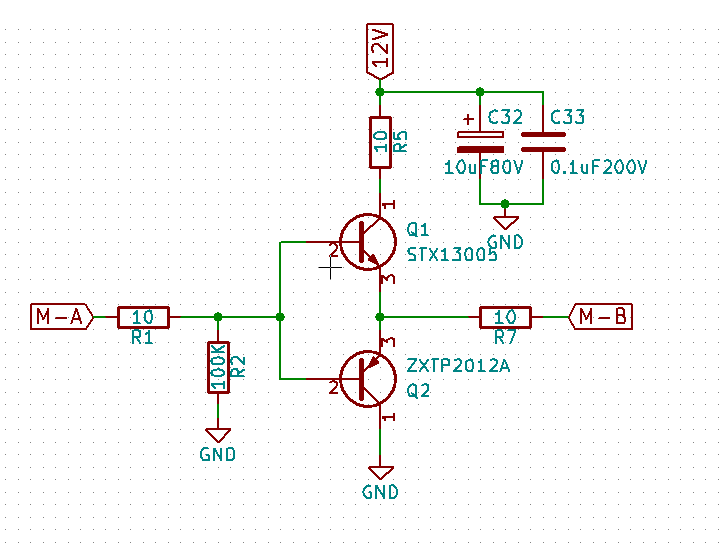Other Parts Discussed in Thread: LM5022, LM5085
Hello,
I'm current designing a UPS that needs a booster to raise the voltage from 56V to 90V @ 5A output.
After studying a lot of the IC we picked up the LM5022-Q1 to use it as a boost converter. We used the datasheet from the LM5022 to calculate all the componets and webench as reference.
The problem we have is the mosfet is overheating when we operate at more than 2A Output at 200KHz. The mosfet we are using is 20N60 from Fairchild. To drive we use a totem pole with the transistors STX13005 and ZXTP2012A with with a 12V supply provided by a step down based in a LM5085.
As heatsink, it is be placed in a 60cmx45cm aluminum case with Gelpad and thermal paste.
If we change the switching freq to 60KHz we can get the output up to 5A but the output voltage drops to 79V at max output.
This is the circuit:
This is the mosfet driver:
This is Output (PIN5) at no load operation:
This is the GATE (After the totem pole)
Thank you very much in advance for your advice.
Kind regards,
Joel





